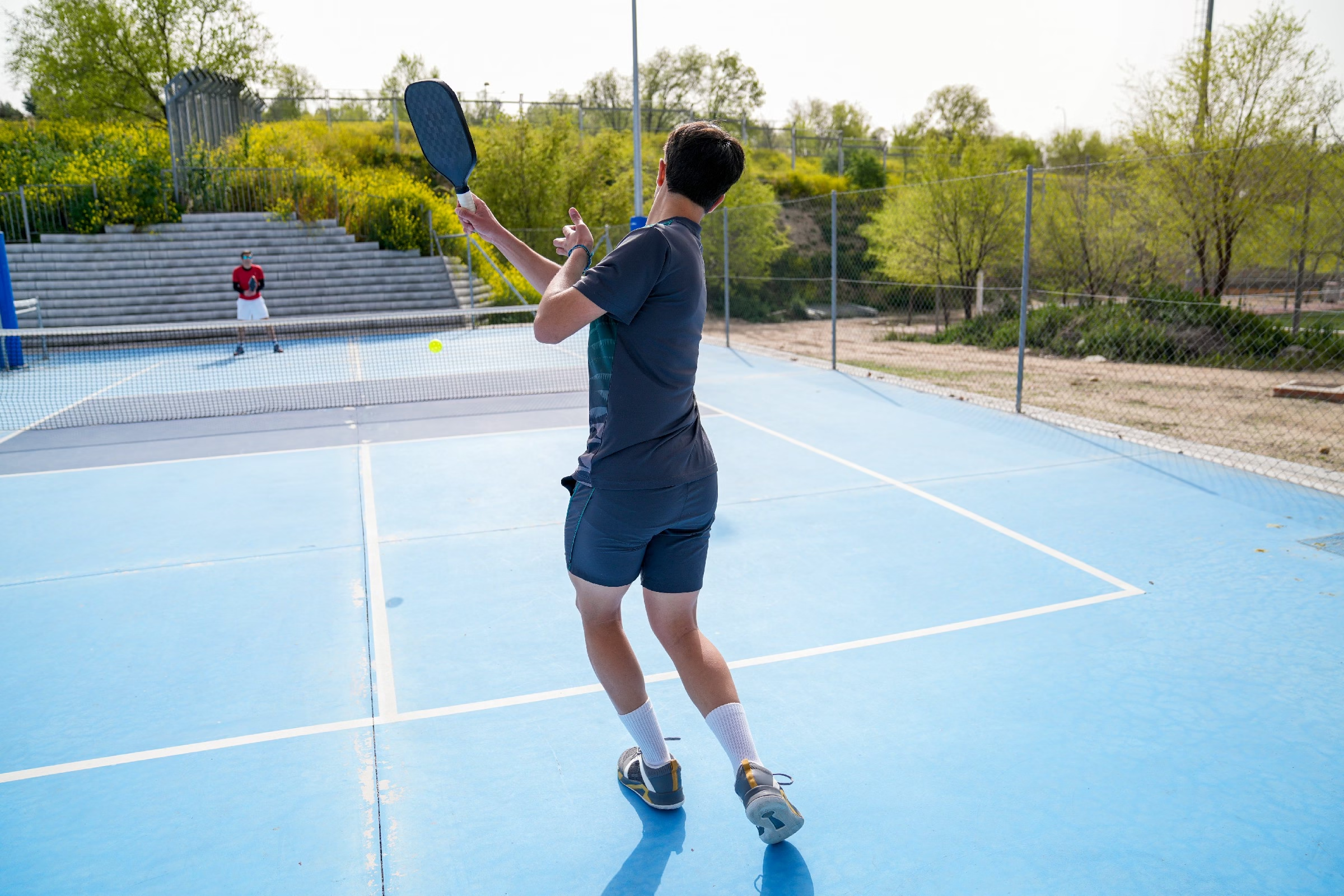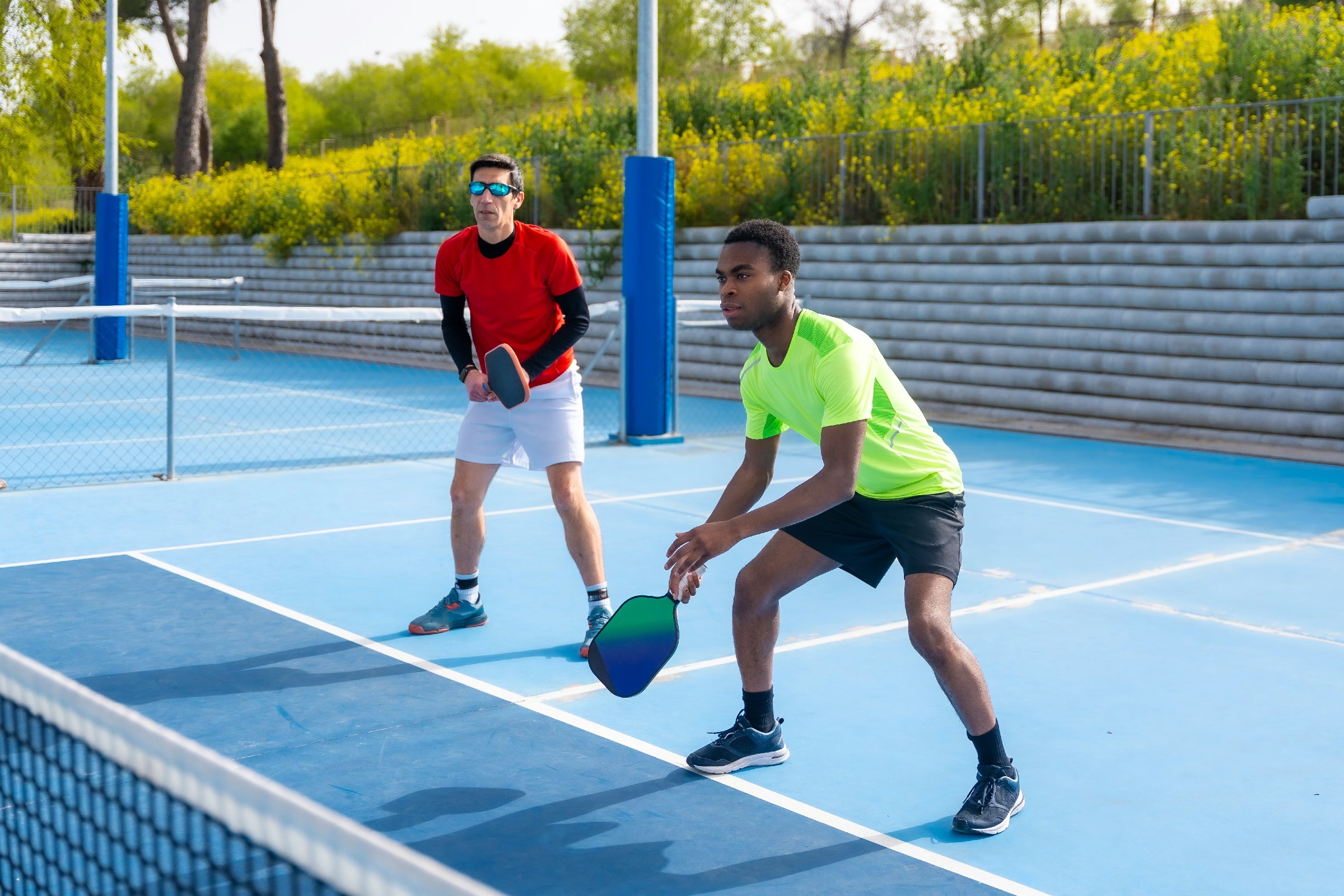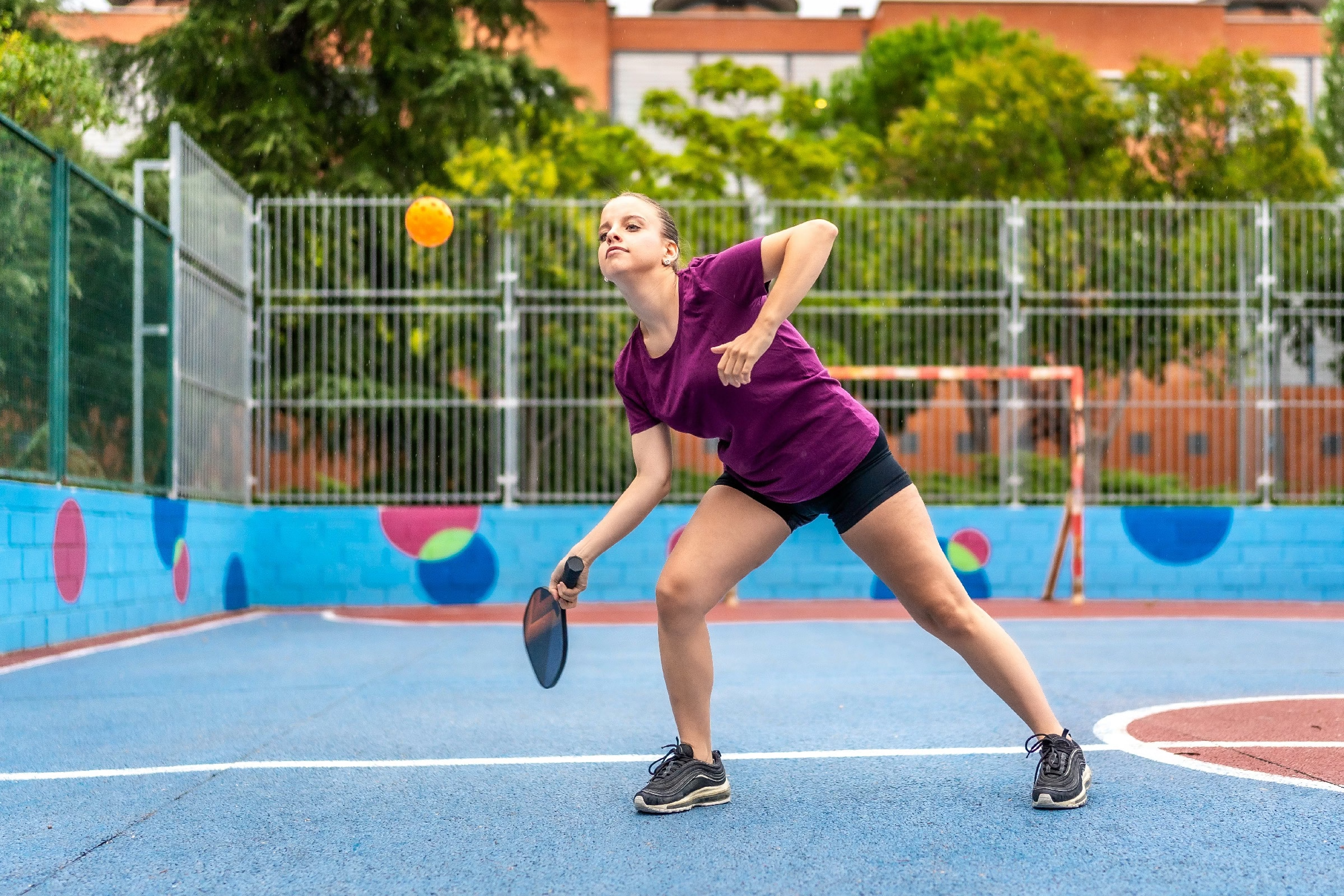Blog
how to buy pickleball paddles

The Ultimate Guide to Choosing the Perfect Pickleball Paddle
As the sun shines down on courts bustling with enthusiastic players, the sound of the pickleball being volleyed back and forth fills the air—a rhythmic dance of skill and strategy. With its explosive growth in popularity, pickleball has captured the hearts of athletes of all ages, but before you step onto the court, there’s one essential piece of equipment you need: the right paddle.Purchasing a pickleball paddle may seem straightforward, yet navigating the myriad of options can be daunting, especially for newcomers. From materials and weights to shapes and grip sizes, the selection can be overwhelming. In this guide, we’ll simplify the process and equip you with the knowledge needed to find a paddle that not only enhances your game but also suits your unique playing style. Whether you’re a beginner just starting your pickleball journey or an experienced player looking to upgrade, let’s dive into the world of paddles and discover how to make a choice that will elevate your game to new heights.
Table of Contents
- Choosing the Right Material for Your Pickleball Paddle
- Understanding Paddle Weight and Its impact on Performance
- Exploring Paddle Shapes and Their Effect on Play
- Evaluating Grip Size for Optimal Comfort and Control
- Budgeting for Quality: Finding Value in Pickleball Paddles
- Testing Paddles: The Importance of Trial and Personal Fit
- Q&A
- In Summary
Choosing the Right Material for Your Pickleball Paddle
When selecting a pickleball paddle,the material it’s made from can significantly influence your gameplay experience. Most paddles are crafted from a range of materials, each offering distinct advantages. Here are some common materials you might consider:
- Wood: An affordable option that provides durability and a solid feel. However, wood paddles tend to be heavier, which may hinder maneuverability.
- Composite: Combining various materials, composite paddles offer a great balance of weight and power. They typically feature a polymer core, providing enhanced control and a larger sweet spot.
- Graphite: Known for its lightness and stiffness, graphite paddles are ideal for players seeking finesse and strength. They frequently enough produce more power with less effort, making them a popular choice at competitive levels.
The core material also plays a critical role in paddle performance. Picking the right core can help you achieve the balance you’re looking for in terms of control, power, and feel:
| Core Material | Characteristics |
|---|---|
| Polymer | Offers excellent durability and sound dampening, making it great for everyday play. |
| Nomex | hard and responsive, ideal for players seeking maximum power and speedy reflexes. |
| Aluminum | Known for its unique blend of power and control, aluminum cores are favored by certain competitive players. |
consider the paddle’s surface material for improved spin and ball control. Different surface textures can enhance your shots in varying ways:
- Sandpaper Finish: Provides more grip, allowing players to put additional spin on the ball.
- Smooth Finish: Offers less friction, which is preferable for players focusing on power and speed.
- Textured Finish: Balances grip and smoothness, making it versatile for diverse playing styles.
understanding Paddle weight and Its Impact on Performance
When selecting a pickleball paddle, one of the most crucial factors to consider is paddle weight. The weight of the paddle can significantly influence your playing style and overall performance on the court. Paddles typically fall into three weight categories: light (7.0 – 7.9 ounces), medium (8.0 – 8.4 ounces), and heavy (8.5 ounces and above). Each weight category serves different player preferences and strengths.
Lightweight paddles are favored by players seeking speed and agility.They allow for quicker maneuvering and faster reaction times, making them ideal for those who rely on dinking and net play. though, they may not generate as much power on shots. In contrast,heavy paddles can deliver more power and stability,making them a good choice for players who prefer baseline plays and aggressive swings. The downside is that these paddles require more strength to handle,possibly leading to fatigue during longer matches.
Understanding your playing style will help you choose the right weight for your paddle. Consider the following:
- Are you a player who prioritizes speed and quick reaction?
- Do you often experience fatigue during long matches?
- How much power do you need in your shots?
By evaluating these factors, you can better decide the paddle weight that aligns with your playing preferences and enhances your overall game performance.
Exploring Paddle Shapes and Their Effect on Play
When it comes to pickleball, the shape of your paddle can significantly influence your gameplay. Players often find themselves choosing between a variety of shapes, each tailored to enhance different aspects of play. Wide-body paddles, as an example, are designed to provide a larger sweet spot, making them ideal for beginners who may not yet have precision in their strikes. These paddles offer a helpful margin for error, allowing players to connect with the ball even if the hit isn’t perfectly centered.
On the flip side, elongated paddles are favored by more experienced players seeking greater reach and power. The elongated shape grants a larger surface area for ball control, enabling advanced techniques like slice shots and powerful drives. additionally, this paddle shape often results in a narrower width, which can facilitate quick hand movements at the net and enhance the maneuverability of the paddle during fast exchanges. Players should consider their skill level and playing style when selecting a paddle shape to ensure it complements their game strategy.
Here’s a quick comparison of common paddle shapes and their effects on play:
| Paddle Shape | Benefits | Best For |
|---|---|---|
| Wide Body | Maximized sweet spot, forgiving on off-center hits | Beginners, casual players |
| Elongated | Greater reach, enhanced ball control | Intermediate to advanced players |
| Standard | Balanced performance, versatile for all styles | All types of players |
Evaluating Grip Size for Optimal comfort and Control
Finding the right grip size for your pickleball paddle is essential for enhancing both comfort and control during your game. A proper grip can mean the difference between a accomplished rally and a missed shot. To determine the best grip size for you,consider the following guidelines:
- Measurement Method: Use a ruler to measure the distance from the tip of your ring finger to the base of your palm. This measurement can help you choose the appropriate grip size.
- Grip Thickness: Paddles typically come in various grip sizes, ranging from 4 inches to 4 ¼ inches. Assess which thickness feels most cozy in your hand.
- Test It Out: if possible, try holding different paddles in a sporting goods store. Hold the paddle in your dominant hand and ensure you can grasp it without feeling cramped or overly loose.
Selecting a grip that promotes proper technique is crucial for maintaining control of your strokes. A grip that’s to small may lead to excessive wrist movement, while a grip that’s too large can cause fatigue during extended play. You should aim for a grip that feels snug yet allows for slight movement. here’s a quick reference table to help you visualize different grip sizes and their corresponding measurements:
| Grip Size | Importance |
|---|---|
| 4.0″ | Best for those with smaller hands, provides precision. |
| 4.25″ | A versatile option,suitable for most players. |
| 4.5″ | Ideal for larger hands, promoting powerful swings. |
Ultimately, the right grip size not only influences your comfort but also impacts your overall performance on the court. Experiment with various options, and don’t hesitate to customize your paddle with extra grip tape or change the grip if you feel it’s necessary. Whichever size you choose, ensuring a natural hold will allow for better shot execution and a more enjoyable pickleball experience.
Budgeting for Quality: Finding Value in Pickleball Paddles
When exploring the market for pickleball paddles, it’s essential to balance quality and cost to ensure you’re getting the best value for your investment. A good paddle can significantly enhance your game,but there’s no need to break the bank. Understanding the key features that dictate paddle quality while keeping an eye on pricing will lead to smarter purchase decisions. Here are some crucial elements to consider:
- Material: Paddles can be constructed from various materials, including wood, composite, and graphite. Each material has a different price point and performance characteristic.
- Weight: Heavier paddles often offer more power, while lighter paddles provide increased maneuverability. Finding a paddle that matches your playing style is vital.
- Grip Size: An appropriate grip size can enhance control, preventing hand fatigue and improving your overall gameplay.
Investing in a mid-range priced paddle often provides a good balance between performance and affordability. To illustrate this, we’ve compiled a table showcasing some notable paddles that offer quality features at a reasonable price:
| Paddle Name | Material | Weight | Price |
|---|---|---|---|
| Epic Pro | Composite | 7.7 oz | $99 |
| Power play | Graphite | 8.1 oz | $89 |
| All-Star | Wood | 9.5 oz | $39 |
ultimately, making informed decisions based on your playing style and budget will yield the best results. Remember, investing a bit more in a quality paddle can enhance your performance and lead to a more enjoyable experience on the court. with a variety of options available, aligning your choice with your skill level and play frequency ensures you’ll find a paddle that meets both your needs and budget.
Testing Paddles: The importance of Trial and Personal Fit
Choosing the right paddle for your pickleball game can significantly impact your performance and enjoyment on the court. It’s essential to remember that not all paddles are created equal; each offers unique characteristics that can suit different play styles and preferences. Testing paddles gives you the opportunity to discover how various weights, grips, and face materials influence your game. Whether you prefer a lightweight option for quick maneuvers or a heavier paddle for powerful shots, experimenting with different paddles in real game situations is crucial.
When you have the chance to test paddles, consider the following features:
- Weight: Lighter paddles enable faster reactions but may lack power.
- Grip size: A proper grip size ensures comfort and control, reducing the chances of injury.
- Material: The paddle’s face material affects ball control and spin; graphite and composite offer different advantages.
To make the most of your testing experience, dedicate time to try out paddles from various brands and models. You might even set up a simple testing chart to track how each paddle feels during your sessions.Such as, you could create a quick reference table like this:
| Paddle Model | weight (oz) | grip Size (in) | Material | personal Rating |
|---|---|---|---|---|
| Model A | 7.5 | 4.25 | Graphite | 8/10 |
| Model B | 8.0 | 4.5 | Composite | 9/10 |
| Model C | 7.0 | 4.0 | wood | 7/10 |
This approach will help you visually evaluate your choices and narrow down the paddles that best complement your play style. Remember,the ultimate goal is to find a paddle that feels like an extension of your arm,enhancing your skills and confidence on the court.
Q&A
Q&A: A Guide to Buying Pickleball Paddles
Q1: What should I consider when choosing the right pickleball paddle?
A1: Choosing the right pickleball paddle is essential for your game performance. Key factors to consider include weight, grip size, material, and paddle dimensions. Lighter paddles (7-8 ounces) offer increased maneuverability, while heavier paddles (8-9 ounces) can provide more power. Grip size is also crucial; a paddle that fits comfortably in your hand helps improve control and reduces the risk of injury.
Q2: What materials are commonly used in pickleball paddles?
A2: Pickleball paddles are typically made from a few different materials. Wooden paddles are durable and economical, great for beginners. Composite paddles, made from materials like fiberglass or carbon fiber, provide durability with excellent control. Polymer and honeycomb cores are popular for their lightweight design and power delivery. Consider how the material affects both feel and performance.
Q3: how can I determine the right grip size for my paddle?
A3: Grip size is frequently enough more critically important than players realize. To determine the most suitable size, use the index finger test: Hold the paddle with one hand, and see if you can comfortably fit your index finger alongside your thumb wrapped around the grip.If it fits easily, the grip size is correct. If there’s too much or too little space, consider adjusting a size up or down.
Q4: Should I choose a wide-body or standard paddle?
A4: The choice between a wide-body and a standard paddle largely depends on your playing style. Wide-body paddles offer a larger sweet spot, making it easier to hit the ball accurately, which can be great for beginners. In contrast, standard paddles may provide more maneuverability and finesse for experienced players looking to refine their technique.
Q5: What is the price range for quality pickleball paddles?
A5: Prices for pickleball paddles can vary widely, generally ranging from $10 for basic wooden paddles to $200 or more for high-end composite models. For recreational players, a mid-range paddle ($50-$100) usually strikes a good balance between quality and affordability. Consider investing more if you play regularly or are looking for performance-enhancing features.
Q6: How can I test a paddle before making a purchase?
A6: Testing a paddle before purchasing is ideal! Many sporting goods stores offer demo paddles, and local pickleball clubs frequently enough have loaner paddles for newcomers. Attending a local pickleball session allows you to try different models and ask experienced players for their insights.
Q7: Are there specific brands known for their quality pickleball paddles?
A7: Yes, several brands have established reputations for quality pickleball paddles. Brands like Paddletek, Selkirk, and Onix offer a diverse range of options suited for players at various skill levels. researching brand reviews and player testimonials can definately help guide your choice.
Q8: What accessories might I need when purchasing a paddle?
A8: In addition to your paddle,consider investing in accessories like protective paddle covers,extra grip tape,and maybe even a good-quality pickleball bag for storage and transport. If you’re playing outdoors, finding a paddle suited for outdoor play may also be beneficial, as it can better withstand elements like UV rays.
Q9: What are some common mistakes to avoid when buying a pickleball paddle?
A9: One common mistake is purchasing a paddle solely based on price without considering how it fits your skill level and playing style. other pitfalls include ignoring grip size and weight preferences—both can significantly affect your game.Additionally, avoid jumping on trendy brands without understanding how they perform compared to others on the market.
Q10: Any final advice for a frist-time paddle buyer?
A10: Absolutely! Take your time researching and testing paddles before making a decision.Pay attention to what feels comfortable, as this will likely enhance your enjoyment of the game. Remember, the best pickleball paddle is one that suits your unique play style and enhances your overall experience on the court.
In Summary
choosing the right pickleball paddle is an adventure that merges personal preference with performance. As you navigate through the myriad of options available, remember to reflect on your playing style, skill level, and the type of gameplay you enjoy most. Whether you’re a seasoned pro or a curious beginner, finding the perfect paddle can enhance your experience on the court and help you elevate your game. So, take your time, do your research, and don’t be afraid to test a few paddles before making your final decision. After all, the right paddle isn’t just a piece of equipment—it’s an extension of your passion for the game. Happy paddling!












